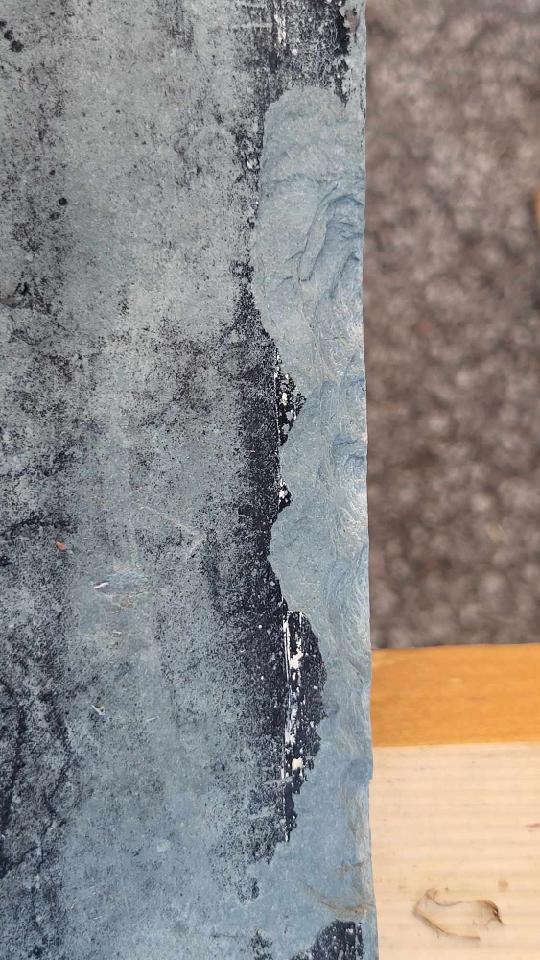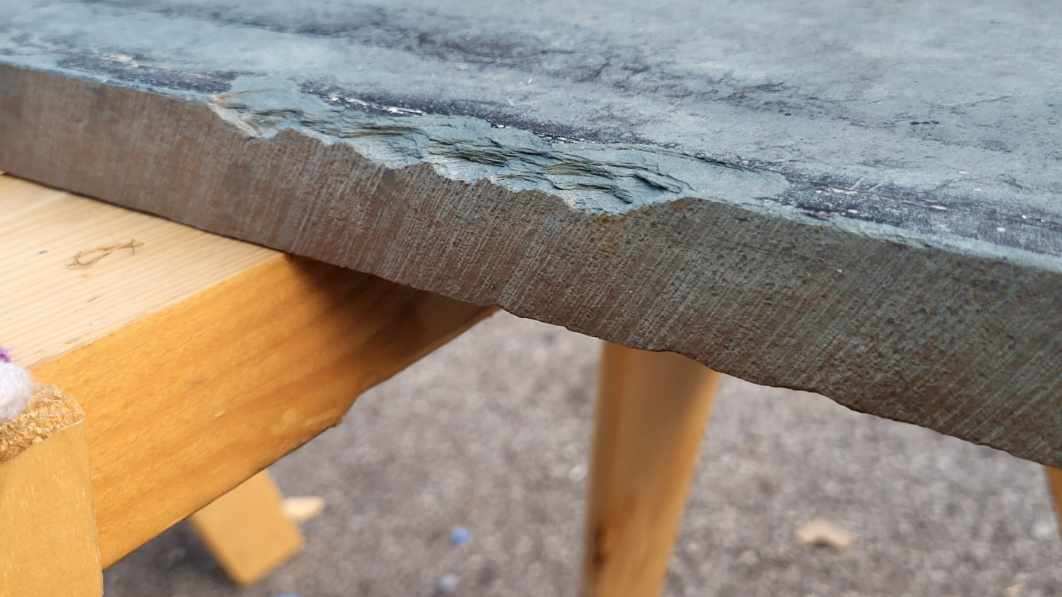So, I found this stone mantel behind the garage of the 100 year old house we just bought. It was mostly buried in the dirt. Fits our mantel perfect. Some sort of green stone. Was painted black at some point. I'm trying to strip the paint and want to refinish the stone. Area is southeast of Pittsburgh. Father of the man who built the house was an Italian stonemason that immigrated.
Don't think it's slate, has a tight grain and rings when you knock on it.
What kind of stone is this?



Shale is not a good building material, it’s too friable (crumbly). Slate starts off as the same rock ans shale except it undergoes a bunch of heat and pressure which makes it much less friable and an excellent material for things like roofing tiles and mantles.
Could you like squish shale in an oven to make it more like slate? Even if it's not economical, just interested in the science of it.
A lot of heat and a lot of pressure would be a start, but then there’s a time factor as well. The heat and pressure mess around with the rocks mineral constituents, but the real “magic” begins as those minerals start recrystallizing. In time (geologic time) that recrystallization makes a much harder rock.
I honestly don’t know if the process can be sped up. I’m thinking of something like firing bricks, but bricks are made with specific ingredients and certain impurities are specifically excluded because they hurt the manufacturing. When you start with shale, lord knows what mother nature threw into that specific specimen and how she arranged it.
I guess the easiest way to get shale harder might be to crush it finely, mix it with water and bake it. If you’re lucky the clay minerals will find each other and form a strong matrix. It wouldn’t be slate, or even a rock anymore, but bricks are handy sometimes.